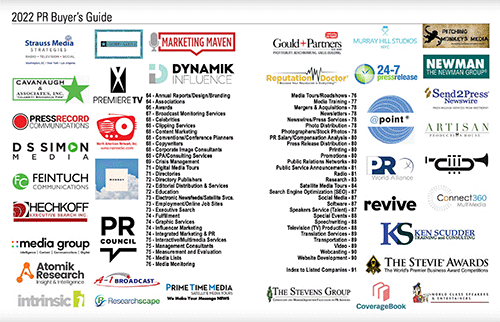Many complaints about the accuracy of media lists were made in the LinkedIn discussion hosted last month by Jon-Michael Basile of Data Quality Campaign.
In response to that thread I would submit that it is impossible for any service to have completely accurate contact points for hundreds of thousands of editors, especially in this era of economic pressures on media.
Media contact services struggle to stay accurate because of the constant change at outlets. At any given moment in the day, multiple media outlets are making staff changes.
Sorry, I wish I had better news on this topic.
Users have to decide how much they are willing to pay for the most up-to-date contact lists. Look for service firms that allow tests of their lists before any contracts are signed. Balancing the accuracy of results with your budget can be determined based on that trial. As a matter of process, we allow prospective clients to submit lists of key outlets to confirm the accuracy of our data.
Tracking reports of media and social media placement should be obtained. The quality of reporting varies widely from service to service. When comparing services make sure to spot duplicate hits that can give a false sense of exposure, and skew your perceived effectiveness.
If you’re content with missing up to 70% of your placements, online can be a good resource. Paywalls and copyright laws prevent the access to, or in many cases the use of, articles found online. In a PR practice putting your client at risk can be a very risky business, so be sure you understand usage rights and what a vendor can provide you.
Functionality of the user interface is a third major factor in picking a media placement/measurement service. Is the interface easy to use and does it include all the analytical tools you need? A good news monitoring portal will be clean and fast while allowing access to needed functions. Although having one service is ideal for accounting and relationship management, users should not hesitate to cherry-pick different services from among the numerous firms in the media monitoring and measurement space.
Cost Can Be Many Thousands
Companies can pay well over $7,000 yearly to the major services and as little as $800 a year from some of the smaller players for media contact management alone. On top of that costs for tracking and measurement can push the top-end costs well over $20,000 with some vendors.
Gone are the days of counting hits, totaling circulation and promoting the ad value equivalency (AVE). True PR measurement helps you understand the real impact, reach, value, engagement, and trends within your results so you can evaluate and plan effectively.
Some of the most reliable and ground breaking insight is coming from PR measurement services that specialize in this area. Some large media monitoring vendors are using automated metrics and algorithms to “estimate” sentiment or tone. Automated metrics can be up to 45% unreliable, so be careful here. Take a good look at the type of measurement you're being offered.
Ask if the prospective or existing PR measurement service provider adheres to current industry standards outlined by groups like AMEC, the international association for measurement and evaluation of communications. PR measurement has evolved greatly in the last five years.
Find out who is doing your analysis. Accurate and reliable PR measurement is “data analysis” not “data entry”. Trained analysts should be the only people evaluating your stories.
Google phrases like “Media Contact Database,” “News Monitoring” or “PR Measurement” to find out all the vendor options you have. There are many great services that can meet or exceed your expectations. Having the time to evaluate your options, and possibly the courage to change vendors, are two things that will ultimately help you in the end.
* * *
Todd Murphy since 1991 has managed the development of the PR measurement and media monitoring solutions at Universal Information Services, Omaha, Neb., which delivers customized contact, tracking, and PR measurement services.



 SaaS platforms now allow businesses to effectively manage and execute their own PR campaigns, putting pressure on agencies to demonstrate the value of the “traditional” PR model.
SaaS platforms now allow businesses to effectively manage and execute their own PR campaigns, putting pressure on agencies to demonstrate the value of the “traditional” PR model. Developing a well-designed TV campaign involves asking three important questions.
Developing a well-designed TV campaign involves asking three important questions. How a "Covid silver lining" can show the way to more effective, cost-efficient video communications.
How a "Covid silver lining" can show the way to more effective, cost-efficient video communications.


 Have a comment? Send it to
Have a comment? Send it to 
No comments have been submitted for this story yet.